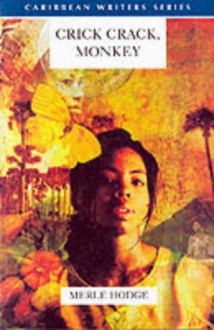
Published in 1970, this novella from Trinidad is classic postcolonial writing, but also the enjoyable story of the life of a young girl. Cynthia, called Cyntie or Tee, and her younger brother are raised by extended family after their mother dies and their father goes abroad. She has childhood escapades and attends a couple of different schools and it’s all vividly portrayed. But she also has a well-off aunt who prizes whiteness in all its forms – physical and cultural – and who makes Tee her project. And so it turns into a story about what in book-critic speech might be called the colonization of a person’s mind: how Tee turns against her upbringing and the people who really love her, but without gaining anything of value to take their place.
There’s a lot of postcolonial literature out there that follows children as they leave behind their traditional upbringings to attend school and encounter the white world – The Dark Child, Nervous Conditions and Mema all come to mind – but this one stands out for its exploration of how internalized racism works. It’s also different for being set in Trinidad, where there isn’t quite the “traditional” lifestyle that exists in Africa; the population is mostly descended from African slaves and South Asian indentured servants, a cultural mix that’s clearly present in the book and gives it a unique color.
But this isn’t only a political book, and I was a little surprised by how well the characters came to life, after seeing them discussed mostly for their ideological roles. Tee’s Auntie Beatrice, for instance, the symbol of colonial thought, turned out to be a surprisingly vulnerable and complex character. She lacks power at home, where her daughters flout her authority and her husband refuses to engage with the family, and in trying to change Tee she seems largely motivated by a desire for the ideal family she’s never had. Other characters likewise feel real and nuanced despite the brevity of the story.
Overall, this book was a pleasant surprise and one I would recommend; social justice oriented readers will particularly appreciate it, but in the complex characters, the vivid descriptions of Tee’s childhood, the rhythms of local speech and the colors of island life, it is also simply a good book.

 Log in with Facebook
Log in with Facebook 






